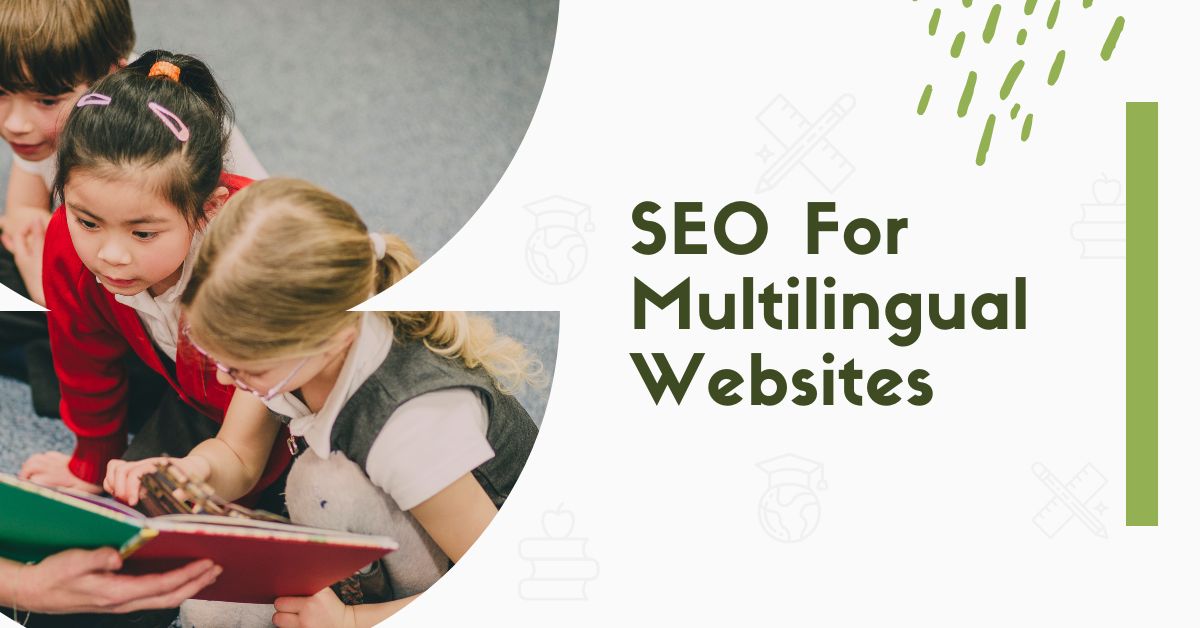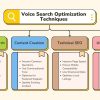In today’s interconnected world, having a strong online presence isn’t just about being visible—it’s about being accessible to diverse audiences across the globe. SEO for multilingual websites plays a critical role in bridging the gap between your business and potential customers who speak different languages. By optimizing your website for multiple languages, you not only enhance user experience but also improve your chances of ranking higher in search engines across various regions.
However, businesses often face significant challenges when venturing into multilingual SEO. Common issues include ineffective keyword research in different languages, poorly translated content that misses cultural nuances, and technical missteps such as improper use of hreflang tags. These challenges can lead to missed opportunities, low engagement, and poor conversion rates from international traffic.
This article outlines proven strategies to overcome these hurdles. From conducting in-depth keyword research and optimizing your website structure to leveraging technical SEO best practices, you’ll learn everything needed to enhance your global visibility and drive meaningful results. Let’s explore how to master SEO for multilingual websites and unlock your business’s full global potential!
Understanding SEO for Multilingual Websites
What Is Multilingual SEO?
Multilingual SEO refers to the process of optimizing a website to rank in search engines for multiple languages and regions. Unlike standard SEO, which focuses on a single language or market, multilingual SEO ensures that your content is tailored to the linguistic and cultural preferences of diverse audiences.
The significance of multilingual SEO lies in its ability to make your website more accessible and appealing to users from different parts of the world. By creating region-specific content and optimizing technical elements like hreflang tags, you enhance user experience and boost search engine rankings across multiple languages. This approach allows businesses to establish a truly global presence and gain a competitive edge in international markets.
Why Multilingual SEO Is Crucial for Global Growth
Expanding your business globally requires more than just translating your content. Multilingual SEO helps you connect with non-English-speaking audiences effectively, opening the door to new opportunities and untapped markets.
- Expanding Your Reach:
Many internet users prefer consuming content in their native language. By offering localized content, you cater to these preferences, significantly increasing your website’s visibility and relevance in international search results. - Boosting Engagement and Conversions:
When users find content that resonates with their language and culture, they are more likely to engage with your brand and take desired actions. This translates to higher click-through rates, reduced bounce rates, and improved conversion rates globally.
By adopting multilingual SEO strategies, you build stronger relationships with global audiences, enhance your brand’s credibility, and drive meaningful growth across regions.
Common Mistakes in Multilingual SEO
Even businesses with good intentions can falter when implementing multilingual SEO. Here are some common pitfalls and how to avoid them:
- Using Automated Translation Without Optimization:
Machine translations often lack accuracy and cultural relevance, leading to awkward phrasing or even offensive content. This can harm your brand’s reputation and fail to engage the audience. Instead, invest in professional translation and localization to ensure your content aligns with local linguistic and cultural standards. - Ignoring Cultural and Linguistic Nuances:
Language is deeply tied to culture, and what works in one region might not work in another. For instance, idioms, humor, or even color symbolism can vary widely between cultures. Neglecting these nuances can make your content seem out of touch or unprofessional. A deep understanding of your target audience’s cultural context is essential for creating content that resonates.
By addressing these common mistakes and implementing best practices, businesses can unlock the full potential of their multilingual SEO efforts and successfully expand their global reach.
Building a Multilingual SEO Strategy
Conducting Keyword Research for Multilingual Sites
Keyword research is the cornerstone of any SEO strategy, and for multilingual websites, it requires even greater precision. Translating keywords directly from one language to another often fails because search habits vary across regions. Instead, you need tools and techniques to identify the most relevant terms in each target language.
- Tools for Keyword Research in Different Languages:
Utilize tools like Google Keyword Planner, SEMrush, and Ahrefs to find keywords that resonate with users in specific regions. These tools allow you to analyze search volumes, trends, and competition for keywords in various languages, ensuring your content aligns with local search behavior. - Incorporating Long-Tail Keywords and Semantic Search:
Long-tail keywords, which are more specific and less competitive, can help you rank higher in local search results. Additionally, semantic search—understanding the intent behind a query—plays a crucial role. Tailoring your keywords to match user intent in different languages enhances your chances of attracting the right audience.
Structuring Your Website for Multilingual SEO Success
Proper website structure is essential for ensuring search engines can easily identify and rank your multilingual content. Choosing the right structure and implementing technical SEO best practices will set the foundation for your global SEO success.
- Subdomains, Subdirectories, or ccTLDs – Which Is Better?
- Subdomains (e.g., es.example.com): Ideal for large, autonomous regions with distinct branding needs.
- Subdirectories (e.g., example.com/es/): Cost-effective and easier to manage, especially for smaller businesses.
- ccTLDs (e.g., example.es): Best for targeting specific countries but require more resources for setup and management.
Choose the structure that aligns with your business goals, budget, and target audience.
- Setting Up Hreflang Tags for Proper Language Targeting:
Hreflang tags signal to search engines which language version of your content to display to users in specific regions. Ensure these tags are implemented correctly on all pages to avoid duplicate content issues and improve rankings in localized search results.
Creating High-Quality Content for Multilingual Audiences
Content is king, and for multilingual websites, its quality can make or break your SEO efforts. Creating localized, culturally relevant content ensures that your audience feels valued and understood.
- The Role of Professional Translation and Localization:
Automated tools like Google Translate may work for basic tasks, but they lack the nuance of human translation. Invest in professional translators who can localize your content, adapting it to the cultural and linguistic preferences of your target audience. - Adapting Tone, Style, and Context for Different Regions:
Consider regional preferences when crafting your message. For instance, formal language may be preferred in some cultures, while others might respond better to casual, conversational tones. Adapting your tone, style, and context ensures your content resonates deeply with diverse audiences, boosting engagement and conversions.
By focusing on these elements, you can build a multilingual SEO strategy that not only drives traffic but also fosters meaningful connections with global audiences.
Technical SEO for Multilingual Websites
Optimizing Meta Tags and Titles in Multiple Languages
Meta tags and titles are vital components of multilingual SEO, as they influence how your website appears in search results and how users engage with it. For multilingual websites, these elements need to be both engaging and culturally relevant to your target audience.
- How to Write Engaging and Localized Meta Descriptions:
A well-crafted meta description should resonate with the local audience by addressing their specific needs or concerns. Use language that aligns with cultural norms and expectations, ensuring the tone is appropriate for the region. Include a compelling call-to-action to encourage clicks. - Incorporating Primary and Secondary Keywords:
Identify the primary keywords relevant to each language and region, and incorporate them naturally into your meta titles and descriptions. Use secondary keywords to add context and improve discoverability without overstuffing. For example, in a Spanish version of your site, prioritize high-search-volume Spanish keywords while maintaining linguistic accuracy.
Image Optimization and Alt Text Localization
Images play a crucial role in enhancing user experience, but they also need to be optimized for search engines and localized for multilingual audiences. Proper optimization ensures faster load times and better accessibility.
- Using Alt Text Effectively Across Languages:
Alt text provides a textual description of images for search engines and visually impaired users. Translate and localize alt text to reflect the content’s meaning accurately in the target language. Avoid direct translation; instead, describe the image in culturally appropriate terms. - Tools for Optimizing Images for Different Regions:
Use tools like TinyPNG or ImageOptim to compress image sizes without compromising quality. Additionally, ensure that the file names are keyword-rich and localized. For instance, instead of naming an image “product.jpg,” use a region-specific file name like “zapatos-negros.jpg” for Spanish-speaking audiences.
Improving Website Speed and User Experience
Website speed and user experience significantly impact multilingual SEO performance. Slow-loading pages can deter users, especially on mobile devices, where speed expectations are even higher.
- The Impact of Speed on Multilingual SEO Performance:
Search engines prioritize websites that load quickly, regardless of language. Optimize your site by reducing server response times, compressing files, and enabling browser caching. Use content delivery networks (CDNs) to ensure fast loading times in all regions. - Mobile-First Indexing for Multilingual Users:
With mobile-first indexing, Google evaluates the mobile version of your site to determine rankings. Ensure your multilingual site is mobile-friendly by using responsive design, optimizing touch elements, and providing seamless navigation. Test your site’s mobile performance with tools like Google’s Mobile-Friendly Test.
By addressing these technical aspects, you can create a multilingual website that not only performs well in search engine rankings but also delivers a superior experience to users worldwide.
Best Practices for Multilingual Link Building
Building Backlinks from Local Domains
Backlinks remain one of the strongest signals for search engines to evaluate the authority and relevance of your website. For multilingual websites, securing backlinks from local domains is a critical component of your SEO strategy.
- The Importance of Regional Backlinking Strategies:
Backlinks from local domains (e.g.,.defor Germany or.frfor France) indicate to search engines that your website is relevant to specific regions. Such links not only boost your authority in local markets but also improve your site’s chances of ranking higher in regional search engine results pages (SERPs).- Example: A French blog linking to your localized French page adds more value than a global English site linking to the same page.
- Tools to Identify High-Quality Local Link Opportunities:
Use tools like Ahrefs, SEMrush, and Moz to identify local domains with strong domain authority that align with your niche. Look for opportunities such as:- Partnering with local influencers or bloggers.
- Submitting guest posts to region-specific websites.
- Building relationships with local news outlets for press coverage.
By focusing on local backlinks, you signal to search engines that your site is both geographically and contextually relevant to the region you’re targeting.
Leveraging Social Media for Multilingual Outreach
Social media platforms are powerful tools for building brand visibility and generating backlinks, especially when used strategically for multilingual audiences.
- Using Platforms to Boost Visibility in Local Markets:
Tailor your social media presence to each region by creating language-specific accounts or pages. For example:- Use WeChat or Weibo for Chinese audiences.
- Optimize posts for regional platforms like VK in Russia or LINE in Japan.
Share localized content consistently, and engage with local followers to build trust and foster community interactions. These actions often lead to organic backlinks as users share your content.
- Examples of Multilingual Social Campaigns:
- A global e-commerce brand runs a holiday campaign in Spain, sharing culturally relevant promotions in Spanish on Instagram and Twitter.
- A travel company publishes a region-specific guide to attractions in French, using hashtags and keywords popular among French-speaking users.
These campaigns not only increase visibility but also drive traffic to the localized versions of your site, creating natural link-building opportunities as users and bloggers share your content.
By integrating regional backlinking strategies and social media outreach, you can enhance your website’s authority and visibility in multilingual markets, driving significant improvements in both organic rankings and audience engagement.
Measuring the Success of Your Multilingual SEO Efforts
Tools for Monitoring Multilingual Website Performance
To ensure your multilingual SEO strategies are effective, you need reliable tools to track and analyze your website’s performance across different languages and regions. These tools provide insights into traffic, user behavior, and rankings, allowing you to refine your approach as needed.
- Google Analytics:
Use Google Analytics to monitor traffic sources, user behavior, and region-specific data. Set up filters and segments to view metrics for specific languages or countries. Key features include:- Tracking visitor demographics and language preferences.
- Analyzing behavior flows to understand how users navigate your site.
- Google Search Console:
Google Search Console helps you track keyword performance, crawl errors, and search appearances for different language versions of your site. Key features include:- Identifying hreflang errors and resolving indexing issues.
- Monitoring clicks, impressions, and CTRs for each language/region.
- Other Tools for Multilingual SEO:
- SEMrush or Ahrefs: To analyze regional keyword rankings and identify opportunities for improvement.
- Screaming Frog SEO Spider: To audit your site for multilingual SEO errors like broken hreflang tags.
Regularly using these tools ensures you stay informed about your site’s performance and uncover areas needing optimization.
Key Metrics to Track for Multilingual SEO
To evaluate the success of your multilingual SEO efforts, focus on metrics that provide insights into regional and linguistic engagement. Here are the key indicators to monitor:
- Organic Traffic by Region:
- Monitor the volume of organic traffic from each targeted region.
- Use Google Analytics to compare traffic trends for different languages or locations. A steady increase in traffic indicates your multilingual SEO strategies are driving visibility.
- Bounce Rates and Conversions from Local Audiences:
- Bounce Rates: A high bounce rate for a specific language version may indicate poor localization or irrelevant content.
- Conversions: Measure form submissions, purchases, or other goals from localized pages to assess whether your content resonates with the audience.
- Keyword Rankings in Various Regions:
- Use tools like Ahrefs or Rank Tracker to monitor how your localized keywords are performing in different search engines (e.g., Google, Bing, Yandex).
- Focus on keywords with regional significance and track improvements over time.
By analyzing these metrics regularly, you can measure the effectiveness of your multilingual SEO efforts, identify problem areas, and make data-driven adjustments to enhance your global reach and rankings.
Future Trends in Multilingual SEO

Image Source Credit: Pexels.com
The Rise of AI in Translation and Optimization
Artificial intelligence (AI) is transforming the way multilingual SEO is approached, particularly in the areas of translation and content optimization. AI-powered tools like Google Translate, DeepL, and ChatGPT are making translations faster and more accurate. However, AI is not just about translating content; it’s also about optimizing it for search engines.
- AI-Driven Localization:
Advanced AI models now consider cultural nuances, regional preferences, and search intent when localizing content. This ensures that translations are not only linguistically accurate but also contextually relevant. - Content Generation and Optimization:
AI tools can analyze search trends and generate multilingual content optimized for specific keywords and user intent. For example, tools like Surfer SEO and MarketMuse can suggest content structures and language-specific keywords to improve rankings in targeted regions.
Voice Search and Its Impact on Multilingual SEO
Voice search is gaining popularity worldwide, with users increasingly relying on smart assistants like Siri, Alexa, and Google Assistant to find information. For multilingual SEO, this trend introduces new opportunities and challenges.
- Optimizing for Natural Language Queries:
Voice search queries are typically longer and more conversational than text-based searches. Businesses must focus on long-tail keywords and question-based phrases in multiple languages to capture voice search traffic. For example:- English: “Where is the best Italian restaurant near me?”
- French: “Où est le meilleur restaurant italien près de moi ?”
- Local Optimization for Regional Variations:
Voice search often includes localized terms and slang. Understanding and incorporating these variations into your content helps you rank higher for voice searches in specific regions. - Featured Snippets for Voice Search:
Structured data and schema markup are crucial for appearing in featured snippets, which are often read aloud during voice searches. Ensure your multilingual content is optimized for these rich results.
Adapting to Evolving Search Algorithms for Global Ranking
Search engines constantly update their algorithms to improve user experience and provide more relevant results. Staying ahead of these changes is critical for multilingual SEO success.
- Prioritizing E-E-A-T (Experience, Expertise, Authority, Trustworthiness):
Search engines like Google are emphasizing high-quality, authoritative content. To rank globally, ensure your localized content meets these criteria by including region-specific expertise and trust signals. - Mobile-First and Core Web Vitals:
With mobile-first indexing and an increased focus on Core Web Vitals, multilingual sites must ensure fast loading speeds, mobile-friendly designs, and seamless navigation across all language versions. - Emphasis on User Intent and Semantic Search:
Evolving algorithms focus on understanding user intent rather than exact keyword matches. Use semantic search strategies, focusing on context and meaning, to ensure your multilingual content aligns with these changes.
By leveraging AI, optimizing for voice search, and adapting to algorithm updates, businesses can stay ahead in the competitive landscape of multilingual SEO. These trends will shape the future of global digital marketing, enabling brands to connect more effectively with diverse audiences worldwide.
Conclusion
In an increasingly globalized world, SEO for multilingual websites is no longer optional—it’s a necessity. By tailoring your website to meet the linguistic and cultural needs of diverse audiences, you can significantly enhance your visibility, engagement, and conversions across international markets. From conducting effective keyword research and creating localized content to implementing technical SEO best practices, multilingual SEO offers a powerful way to establish your brand on a global stage.
The sooner you begin optimizing your website for multilingual audiences, the faster you’ll see the benefits. Every step you take—whether refining your meta tags, improving website structure, or leveraging AI-powered tools—brings you closer to unlocking your global potential.
If you’re ready to take your multilingual SEO efforts to the next level, don’t hesitate to seek professional guidance. Explore expert services that specialize in crafting tailored strategies for multilingual optimization, ensuring your website reaches and resonates with audiences around the world. Start today, and watch your business grow beyond borders!








Add comment